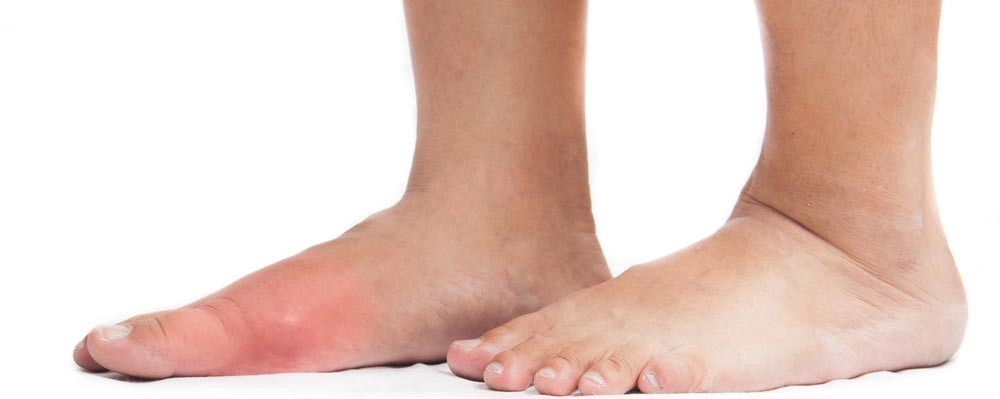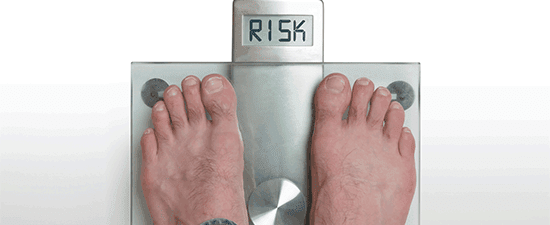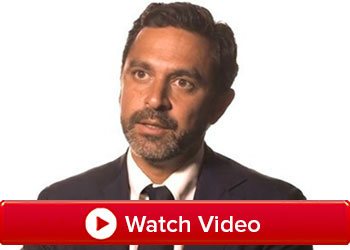- Home
- Advanced Treatments
- Ankle Replacement & Ankle Fusion
Total Ankle Replacement and Ankle Fusion Surgery
Total Ankle Replacement and Ankle Fusion Surgery
If you suffer from painful advanced ankle arthritis, a painful ankle deformity, or a severe ankle injury, and haven't received relief from non-surgical treatments, don’t despair! You still have two very effective surgical options.
The orthopedic surgeons at University Foot & Ankle Institute (UFAI) are trained in state-of-the-art ankle fusion and joint replacement surgeries. While we always try to start with conservative treatment options (such as bracing, rest, and physical therapy), surgery has provided relief for many of our patients.
- What’s an ankle fusion?
- What’s an ankle replacement?
- Total ankle replacement vs. ankle fusion, which is better?
- The importance of picking the right ankle replacement surgeon
- A UFAI Ankle Replacement Patient Says...
- Ankle replacement options at UFAI
- What is the recovery from ankle replacement surgery?
- UFAI, the Best Surgeons for Ankle Replacement Surgery
- Ankle replacement and ankle fusion FAQs
- How long does an ankle replacement last?
- What kind of surgeon is best for ankle surgery?
- How do I find a reputable ankle replacement surgeon near me?
-
Foot and Ankle Surgeon and Director of University Foot and Ankle Institute
Dr. Bob Baravaria DPM, FACFAS is a Board-Certified Podiatric Foot and Ankle Specialist. He is an assistant clinical professor at the UCLA School of Medicine and serves as Director of University Foot and Ankle Institute.
Dr. Baravarian has been involved in athletics his entire life and played competitive tennis in high school and college. He has an interest in sports medicine, arthritis therapy, and trauma/reconstructive surgery of the foot and ankle. He is also fluent in five languages (English, French, Spanish, Farsi, and Hebrew),
Blog Articles about Ankle Replacement and Ankle Fusion
- Is there a link between gout and heart disease? Studies Say Yes
- Curing the Painful Grind of Foot and Ankle Arthritis (Osteoarthritis)
- Bunions vs. Big Toe Arthritis, What's the Difference?
- Yes, Humans Can Regrow Cartilage! (new study)
- Got Big Toe Bumps and Lumps? Here’s 5 Things You Need to Know
- 7 Causes of Inner Ankle Pain Revealed!
- When the Cartiva Big Toe Joint Implant Fails
- How Carrying Extra Weight Affects Your Feet and Ankles
- How to Apply for Social Security Disability with Arthritis
- Dr.'s Most Interesting Cases: the Heel that wouldn't Heal!
 I finally found a Doctor that I feel confident will help me address the best treatment for my bone spur condition. I was also i...Raymond S.
I finally found a Doctor that I feel confident will help me address the best treatment for my bone spur condition. I was also i...Raymond S. Overall, it was a great experience. I've been coming to Dr. Kellman for about a year and he and his staff are very helpful.Vanessa W.
Overall, it was a great experience. I've been coming to Dr. Kellman for about a year and he and his staff are very helpful.Vanessa W. ExcellentDebasish M.
ExcellentDebasish M. Everyone was friendly and professional.Victor L.
Everyone was friendly and professional.Victor L. Very efficient and an excellent serviceHorwitz J.
Very efficient and an excellent serviceHorwitz J. Chaos in the office checkin. We weren’t forewarned about the iPad data collection. That made me late for a following appointmen...Carl C.
Chaos in the office checkin. We weren’t forewarned about the iPad data collection. That made me late for a following appointmen...Carl C. Excellent care and super smart people. They got me back on my feet, literally. My heel pain is gone, finally and they made it h...Greg W.
Excellent care and super smart people. They got me back on my feet, literally. My heel pain is gone, finally and they made it h...Greg W. Dr Nalbandian is an exceptional doctor and person. The staff respectfully & compently delt with an issue I had regarding a prev...Karen M.
Dr Nalbandian is an exceptional doctor and person. The staff respectfully & compently delt with an issue I had regarding a prev...Karen M. Visiting the office is a pleasurable occurance.Thomas J.
Visiting the office is a pleasurable occurance.Thomas J. Dr Kelman and his staff are always wonderfully caring and respectful to my father who has Alzheimer's dementia.Erland E.
Dr Kelman and his staff are always wonderfully caring and respectful to my father who has Alzheimer's dementia.Erland E. Thank you for being there for your patients.Dieter B.
Thank you for being there for your patients.Dieter B. Knowledgeable, Professional and very effective in treating and analyzing my ailmentRoger G.
Knowledgeable, Professional and very effective in treating and analyzing my ailmentRoger G.
-
 Listen Now
Dr.'s Most Interesting Cases: the Heel that wouldn't Heal!
Read More
Listen Now
Dr.'s Most Interesting Cases: the Heel that wouldn't Heal!
Read More
-
 Listen Now
Got Big Toe Bumps and Lumps? Here’s 5 Things You Need to Know
Read More
Listen Now
Got Big Toe Bumps and Lumps? Here’s 5 Things You Need to Know
Read More
-
 When the Cartiva Big Toe Joint Implant Fails
Read More
When the Cartiva Big Toe Joint Implant Fails
Read More
-
 Listen Now
Yes, Humans Can Regrow Cartilage! (new study)
Read More
Listen Now
Yes, Humans Can Regrow Cartilage! (new study)
Read More
-
 Listen Now
Curing the Painful Grind of Foot and Ankle Arthritis (Osteoarthritis)
Read More
Listen Now
Curing the Painful Grind of Foot and Ankle Arthritis (Osteoarthritis)
Read More
-
 How to Apply for Social Security Disability with Arthritis
Read More
How to Apply for Social Security Disability with Arthritis
Read More
-
 Listen Now
Is there a link between gout and heart disease? Studies Say Yes
Read More
Listen Now
Is there a link between gout and heart disease? Studies Say Yes
Read More
-
 Listen Now
7 Causes of Inner Ankle Pain Revealed!
Read More
Listen Now
7 Causes of Inner Ankle Pain Revealed!
Read More
-
 Listen Now
Bunions vs. Big Toe Arthritis, What's the Difference?
Read More
Listen Now
Bunions vs. Big Toe Arthritis, What's the Difference?
Read More
-
 Listen Now
How Carrying Extra Weight Affects Your Feet and Ankles
Read More
Listen Now
How Carrying Extra Weight Affects Your Feet and Ankles
Read More












